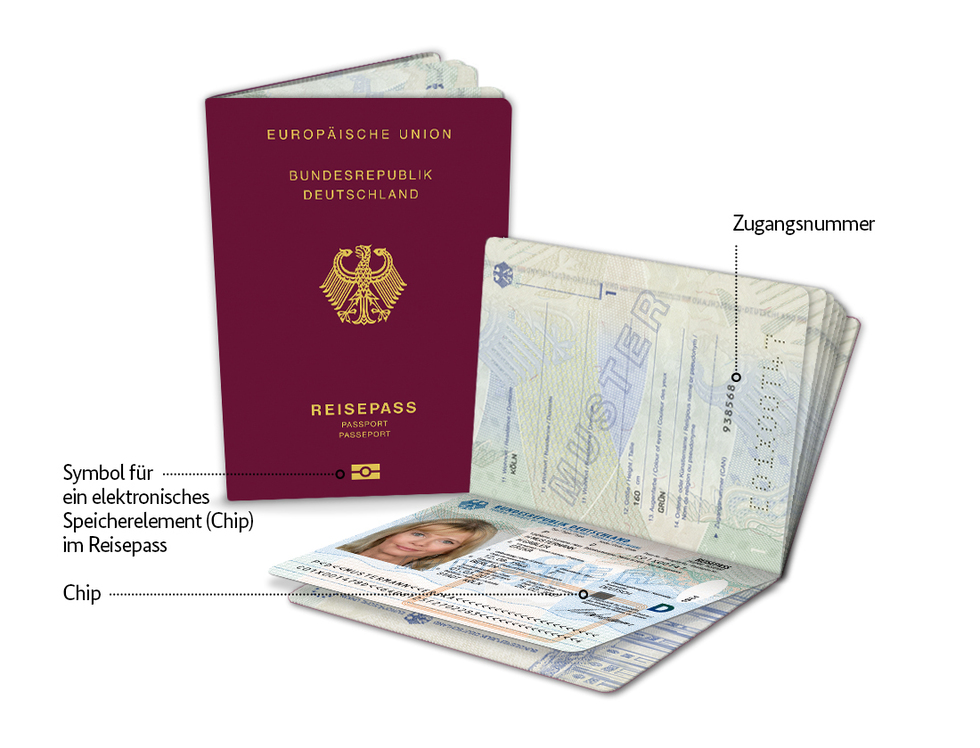Electronic Passport (ePass)
The electronic passport (ePass) was introduced in Germany on 1 November 2005. A contactless chip (radio frequency chip) is integrated into the passport cover. This contains the personal data from the passport and the biometric facial image; since 1 November 2007 it has also included two fingerprints of the passport holder. This means that it meets all the European Union requirements for passports.
A new version of the passport has been issued since 1 March 2017, which updates the passport and its physical security features. Furthermore, the RF chip is now located in the data card; similar to the new identity card, this is now made of polycarbonate. The RF chip itself and the data stored on it have not changed from the 2nd generation of electronic passports (ePass) in 2007.

Data protection
The data on the passport is not stored centrally. The registry office stores the same data in its passport registers as it did prior to the introduction of the electronic passport. The fingerprints are stored exclusively on the RF chip and briefly during the passport production. As soon as the passport is collected by the holder from the registry office, the fingerprint data required for recognition and production are deleted. This is stipulated in Section 16 of the Passport Act.
Various security mechanisms have been developed to protect the data on the RF chip against unauthorised reading.
Advantages of the electronic passport
The digitally stored facial image on the RF chip is higher quality than the printed image, as it is not distorted by the structure of the passport card (due to printing authenticity features). The digital image and the stored fingerprints are therefore suitable for establishing whether the person and the passport really match. You can find out more about the scope of this in the "Biometrics" section.
In addition, the security mechanisms of the RF chip offer the option to quickly detect forgeries or falsifications of the electronic passport. For more information, see "Passive authentication" ...
Contents of the electronic passport
The electronic passport has 32 or 48 pages. The first page is the data card. The passport contains the following personal data:
- Last name* and birth name, if applicable*
- first names*
- doctoral degree*
- date* and place* of birth
- sex*
- height
- eye colour
- place of residence
- nationality*
The data marked * is contained on the data card; all other data is shown on the following page. In addition, the type of document (e.g. "PD" for diplomatic passport), country code, date of issue and expiry, passport number, issuing authority and the signature of the holder are printed on the data card.
In the lower section of the data card there is also a machine readable zone (MRZ), which can be read by optical character recognition.
It contains the document type, the abbreviation "D" for Federal Republic of Germany, the last name, the first name(s), the serial number of the passport, nationality, date of birth, sex, expiry date and check digits.
The legally prescribed passport model is shown here.
In addition to the data listed above, the RF chip also contains two fingerprints captured at the time of application. You can find more information on the capture of fingerprints and the requirements for the photograph in the Biometrics section.
Validity period
According to the Section 5 of the Passport Act, the period of validity of the passport is ten years; for persons under 25 years it is 6 years.


